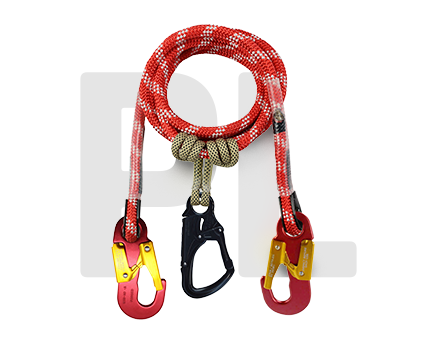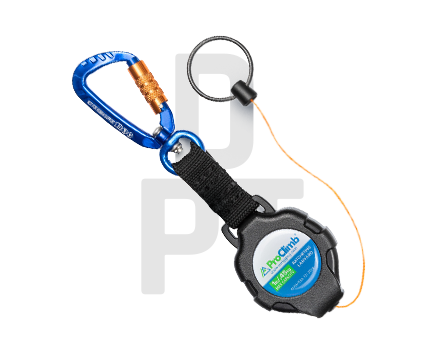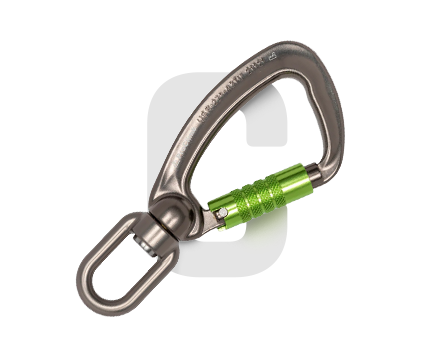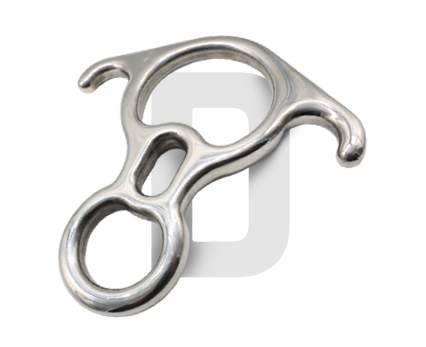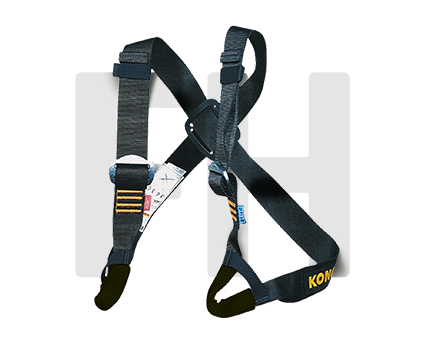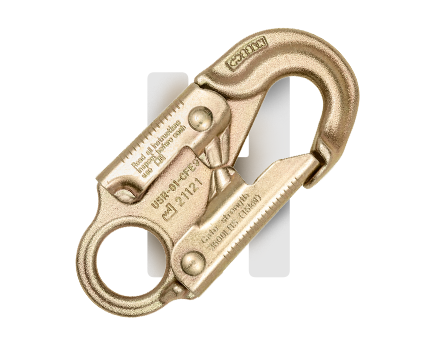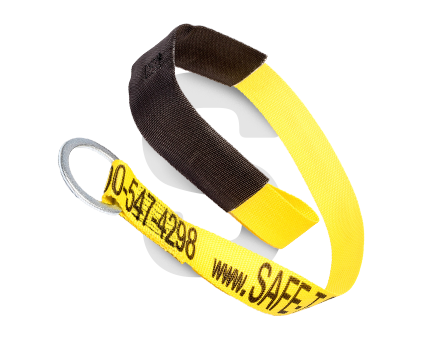Categories
Filter
Climbing Gear
ProClimb Big Rescue Figure 8 Descender - Premium Stainless Steel with Bent-Ears - 50kN
ProClimb Screw Lock Large D Steel Carabiner - 60kN Professional Climbing Hardware
ProClimb ANSI Certified Aluminum Rope Termination Plate - 16-19mm Fiber Rope Anchor

RIGGING SUPPLY YOU CAN DEPEND ON
Professional Climbing Gear & Equipment
Climbing gear encompasses the essential equipment and safety systems that enable climbers to ascend vertical terrain safely and efficiently. From dynamic climbing ropes and harnesses to carabiners, belay devices, and protection hardware, quality climbing gear is critical for safety in rock climbing, mountaineering, ice climbing, and rope access applications. US Rigging offers a comprehensive selection of professional-grade climbing equipment from trusted manufacturers, ensuring you have reliable gear for every vertical adventure.
Essential Climbing Equipment Categories
Climbing gear can be organized into several key categories, each serving specific functions in the climbing system:
Ropes & Cordage
- Dynamic climbing ropes
- Static ropes for rappelling
- Accessory cord
- Webbing and slings
- Prusik cord
Personal Safety Equipment
- Climbing harnesses
- Helmets
- Belay devices
- Descenders and rappel devices
- Personal anchor systems
Hardware & Protection
- Carabiners (locking & non-locking)
- Quickdraws
- Cams and nuts
- Pitons and ice screws
- Anchoring equipment
Specialized Equipment
- Ascenders and descenders
- Pulleys and hauling systems
- Rope grabs
- Rescue equipment
- Training and practice gear
Core Climbing Gear
Climbing Ropes
The climbing rope is the most critical piece of safety equipment in any climbing system. Dynamic ropes are designed to stretch and absorb energy during falls, while static ropes provide minimal stretch for rappelling and rope access work. All climbing ropes must meet UIAA or EN safety standards.
Types of Climbing Ropes:
- Single Ropes: Used alone for sport climbing and gym climbing (9.5mm-11mm)
- Half Ropes: Used in pairs for trad climbing and mountaineering (8mm-9mm)
- Twin Ropes: Both ropes clipped to each piece of protection (7mm-8mm)
- Static Ropes: Low-stretch ropes for rappelling and rope access
Climbing Harnesses
Climbing harnesses secure the climber to the rope and distribute fall forces across the waist and legs. Modern harnesses feature padded waist belts and leg loops for comfort, gear loops for equipment, and reinforced tie-in points for maximum safety.
Harness Types:
- Sport Climbing Harnesses: Lightweight with minimal padding for gym and sport routes
- Trad Climbing Harnesses: Multiple gear loops and adjustable leg loops
- Mountaineering Harnesses: Adjustable for wearing over clothing
- Big Wall Harnesses: Extra padding and gear loops for multi-day climbs
- Full-Body Harnesses: Additional upper body support for specific applications
Carabiners
Carabiners are metal loops with spring-loaded gates used to connect components of the climbing system. They come in locking and non-locking varieties, with different shapes optimized for specific uses.
Carabiner Types:
- Locking Carabiners: Screw-gate or auto-locking for critical connections
- Non-Locking Carabiners: Quick and easy clipping for quickdraws
- HMS/Pear-Shaped: Large opening for belay devices and munter hitches
- D-Shape: Strong and efficient for general use
- Oval: Symmetrical loading for pulleys and gear
Belay Devices
Belay devices create friction on the rope to control descent and catch falls. Modern belay devices range from simple tube-style devices to assisted-braking devices that help lock the rope during a fall.
Belay Device Types:
- Tube-Style Devices: Simple, versatile, and lightweight
- Assisted-Braking Devices: Help lock rope during falls for added security
- Figure-8 Descenders: Classic rappel devices for controlled descent
- Auto-Locking Devices: Automatically lock when weighted
Climbing Disciplines & Applications
Rock Climbing
- Sport climbing
- Traditional (trad) climbing
- Bouldering
- Top-rope climbing
- Multi-pitch climbing
Mountaineering
- Alpine climbing
- Ice climbing
- Mixed climbing
- Glacier travel
- High-altitude expeditions
Industrial & Professional
- Rope access work
- Tower climbing
- Arborist work
- Rescue operations
- Confined space entry
Training & Recreation
- Indoor climbing gyms
- Climbing courses and instruction
- Team building activities
- Adventure programs
- Youth climbing programs
Safety Standards & Certifications
Climbing gear used for life safety must meet rigorous international safety standards:
Key Safety Standards
- UIAA (International Climbing and Mountaineering Federation): Global standard for climbing equipment
- EN (European Norms): European safety standards for climbing gear (EN 892 for ropes, EN 12275 for carabiners, etc.)
- CE Marking: Indicates compliance with European safety standards
- NFPA 1983: North American standard for rescue and rope access equipment
- ANSI: American National Standards for fall protection and climbing equipment
Safety First: Always purchase climbing gear from reputable manufacturers and authorized dealers. Counterfeit climbing equipment exists and can be deadly. Verify certifications and never compromise on safety equipment quality.
Choosing Climbing Gear
Key Considerations
- Climbing Discipline: Sport, trad, mountaineering, or rope access requirements differ
- Experience Level: Beginners may benefit from assisted-braking belay devices and more forgiving gear
- Certification: Ensure all gear meets UIAA, EN, or applicable safety standards
- Weight vs. Durability: Balance lightweight gear for alpine climbing vs. durable gear for frequent use
- Compatibility: Ensure all components work together (rope diameter with belay device, etc.)
- Budget: Invest in quality safety equipment; never compromise on critical gear
- Fit and Comfort: Harnesses and helmets must fit properly for safety and comfort
- Intended Use: Gym climbing vs. outdoor climbing vs. professional rope access
Gear Inspection & Maintenance
Regular inspection and proper maintenance are critical for climbing gear safety:
Inspection Guidelines
- Before Each Use: Visually inspect all gear for damage, wear, or defects
- Ropes: Check for cuts, abrasion, soft spots, discoloration, or sheath damage
- Harnesses: Inspect stitching, webbing, and buckles for wear or damage
- Carabiners: Check gates function smoothly, no cracks or deformation
- Belay Devices: Ensure moving parts function correctly, no excessive wear
- Helmets: Check for cracks, dents, or damage to shell and suspension
- Webbing & Slings: Look for cuts, abrasion, UV damage, or stiffness
Retirement Criteria - Retire Gear Immediately If:
- Gear has arrested a significant fall
- Visible damage, cuts, or structural compromise
- Excessive wear beyond manufacturer specifications
- Gear has been exposed to chemicals or extreme heat
- Age exceeds manufacturer recommendations (typically 10 years from manufacture)
- Gear's history is unknown or undocumented
- Any doubt exists about gear integrity or safety
Your life depends on your gear. When in doubt, retire it.
Care & Maintenance
- Cleaning: Wash ropes and soft goods with mild soap and lukewarm water. Rinse thoroughly
- Drying: Air dry completely away from direct heat and sunlight
- Storage: Store in cool, dry, dark location away from chemicals and UV exposure
- Avoid Contamination: Keep away from acids, solvents, fuels, and other chemicals
- Documentation: Maintain usage logs for critical gear, especially ropes and harnesses
- Proper Use: Use gear only for intended purposes and within rated capacities
Frequently Asked Questions
What climbing gear do I need to get started?
For gym climbing: climbing shoes, harness, belay device, and locking carabiner. The gym typically provides ropes. For outdoor climbing, add: helmet, dynamic rope (appropriate type for your climbing), quickdraws or protection (depending on sport vs. trad), and personal anchor system. Consider taking a climbing course to learn proper techniques and safety systems.
How do I know if climbing gear is safe to use?
Check for current safety certifications (UIAA, EN, CE marking). Purchase from authorized dealers to avoid counterfeit gear. Inspect before each use for damage or wear. Maintain usage logs and retire gear according to manufacturer guidelines. Never use gear with unknown history or that has arrested a significant fall.
How long does climbing gear last?
Lifespan varies by usage intensity. Ropes used frequently may last 1-3 years; occasional use might last 5-7 years. Maximum shelf life is typically 10 years from manufacture. Harnesses and soft goods: 1-5 years depending on use. Metal gear (carabiners, belay devices): can last many years if undamaged. Always follow manufacturer retirement recommendations and inspect regularly.
Can I buy used climbing gear?
Generally not recommended for life safety equipment. You cannot verify the gear's history, including falls arrested, exposure to chemicals, or improper storage. The small savings are not worth the risk. Only purchase new gear from authorized dealers. Exception: some organizations sell used gear with complete documented history, but this is rare.
What's the difference between climbing rope types?
Dynamic ropes stretch to absorb fall energy (essential for lead climbing). Static ropes have minimal stretch for rappelling and rope access (never use for lead climbing). Single ropes are used alone (most common). Half ropes are used in pairs for wandering routes. Twin ropes are both clipped to each piece. Choose based on your climbing discipline and protection requirements.
Professional Climbing Gear from US Rigging
US Rigging is a manufacturer and master distributor of climbing ropes, fall protection equipment, and industrial rigging equipment located in Santa Ana, California. With over 40 years of experience serving climbers, mountaineers, rope access professionals, and outdoor enthusiasts, we offer premium climbing gear from the world's most trusted manufacturers.
Our climbing gear collection includes UIAA and EN-certified ropes, harnesses, carabiners, belay devices, and all the essential equipment you need for safe vertical adventures. Whether you're a beginner taking your first climbing course, an experienced alpinist planning your next expedition, or a rope access professional working at height, we have the expertise and inventory to outfit you with reliable, certified climbing gear.
Browse our climbing gear selection and contact our knowledgeable team for expert guidance. When you're climbing, trust US Rigging for certified equipment that meets the highest standards of safety and performance.
